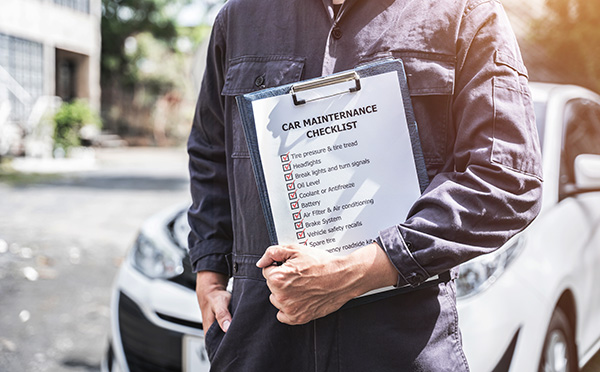
So, you've just purchased a used car—congratulations! Now, as excited as you may be to hit the road, there's one crucial step you shouldn't overlook: maintenance. Even if the car appears to be in great condition, taking the time to perform some essential maintenance can save you from unexpected breakdowns and costly repairs down the road. But where do you start? These are the key maintenance steps you should take after buying a used car to ensure it stays in top shape.
Check and Change the Fluids
One of the first things you should do after purchasing a used car is to check and, if necessary, change all the essential fluids. This includes engine oil, transmission fluid, coolant, brake fluid, and power steering fluid. While the previous owner may have kept up with regular maintenance, it's best to start with a clean slate to ensure everything is up to your standards.
Start with the engine oil. If it looks dark or dirty, it's time for an oil change. Even if the oil appears fine, consider changing it anyway so you know exactly when it was last done. While you're at it, check the oil filter and replace it if needed. Moving on to the transmission fluid, it should be pinkish-red and free of debris. Dirty or burnt-smelling fluid is a clear sign that it's time for a change.
Coolant is another critical fluid to inspect. It should be a bright green, orange, or yellow color, depending on the type. If it looks murky or rusty, flush the system and refill it with fresh coolant. The same goes for brake fluid; it should be clear or slightly yellow. If it's dark, it's time to replace it. Finally, don't forget to check the power steering fluid, which should be at the correct level and clean.
Inspect and Replace Worn Out Parts
Even if the car seems to run smoothly, some parts might be nearing the end of their lifespan. Take the time to inspect and replace any worn-out parts, starting with the tires. Check for uneven wear, bald spots, or sidewall damage. If the tires are in poor condition, it's a good idea to replace them for safety and performance.
Next, examine the brake pads and rotors. Worn brake pads can compromise your car's ability to stop effectively, while damaged rotors can lead to vibrations and noise when braking. If you notice any issues, have them replaced as soon as possible. Another important part to inspect is the battery. If it's more than three years old or shows signs of corrosion, it's best to replace it to avoid unexpected failures.
Don't forget to check the air filters, both the engine and the cabin. A clogged engine air filter can reduce fuel efficiency and performance, while a dirty cabin air filter can lead to unpleasant odors and reduced airflow inside the car. Replace them if they're dirty or haven't been changed recently.
Evaluate the Belts and Hoses
Belts and hoses are often overlooked, but they play a crucial role in your car's operation. The serpentine belt, which drives multiple accessories like the alternator and power steering pump, should be checked for cracks, fraying, or excessive wear. If you notice any signs of damage, replace the belt before it snaps and leaves you stranded.
Hoses, on the other hand, carry vital fluids throughout your car. Inspect them for cracks, bulges, or leaks, particularly the radiator hoses. These hoses are responsible for carrying coolant to and from the engine, so any issues can lead to overheating. If you find any damaged hoses, replace them immediately.
Check the Lights and Electrical System
While it might seem like a small detail, ensuring all your lights and electrical components are in working order is essential for both safety and legality. Start by checking the headlights, brake lights, turn signals, and reverse lights. Replace any burned-out bulbs, and consider upgrading to brighter or more energy-efficient options if needed.
It's also a good idea to test the car's electrical system, including the battery, alternator, and starter. A simple way to do this is by using a multimeter to check the battery voltage. A healthy battery should read around 12.6 volts when the car is off and 13.7 to 14.7 volts when running. If the readings are off, you may need to address potential issues with the alternator or battery.
Consider a Full Diagnostic Check
Even after performing these maintenance steps, it's wise to have a full diagnostic check done by a professional technician. Modern cars are equipped with complex computer systems that can store trouble codes, even if no warning lights are on. A diagnostic check can uncover hidden issues that might not be immediately apparent, allowing you to address them before they become major problems.
A technician can perform a more thorough inspection of the vehicle's suspension, exhaust system, and drivetrain. They can also check for any potential recalls or service bulletins that may apply to your car. Investing in a full diagnostic check gives you peace of mind, knowing that your used car is in the best possible condition.
Don't leave your car's health to chance! Bring your newly purchased vehicle to TC Auto Service for a comprehensive inspection and maintenance service. Our experienced technicians will ensure your car is running at its best, so you can enjoy worry-free driving.